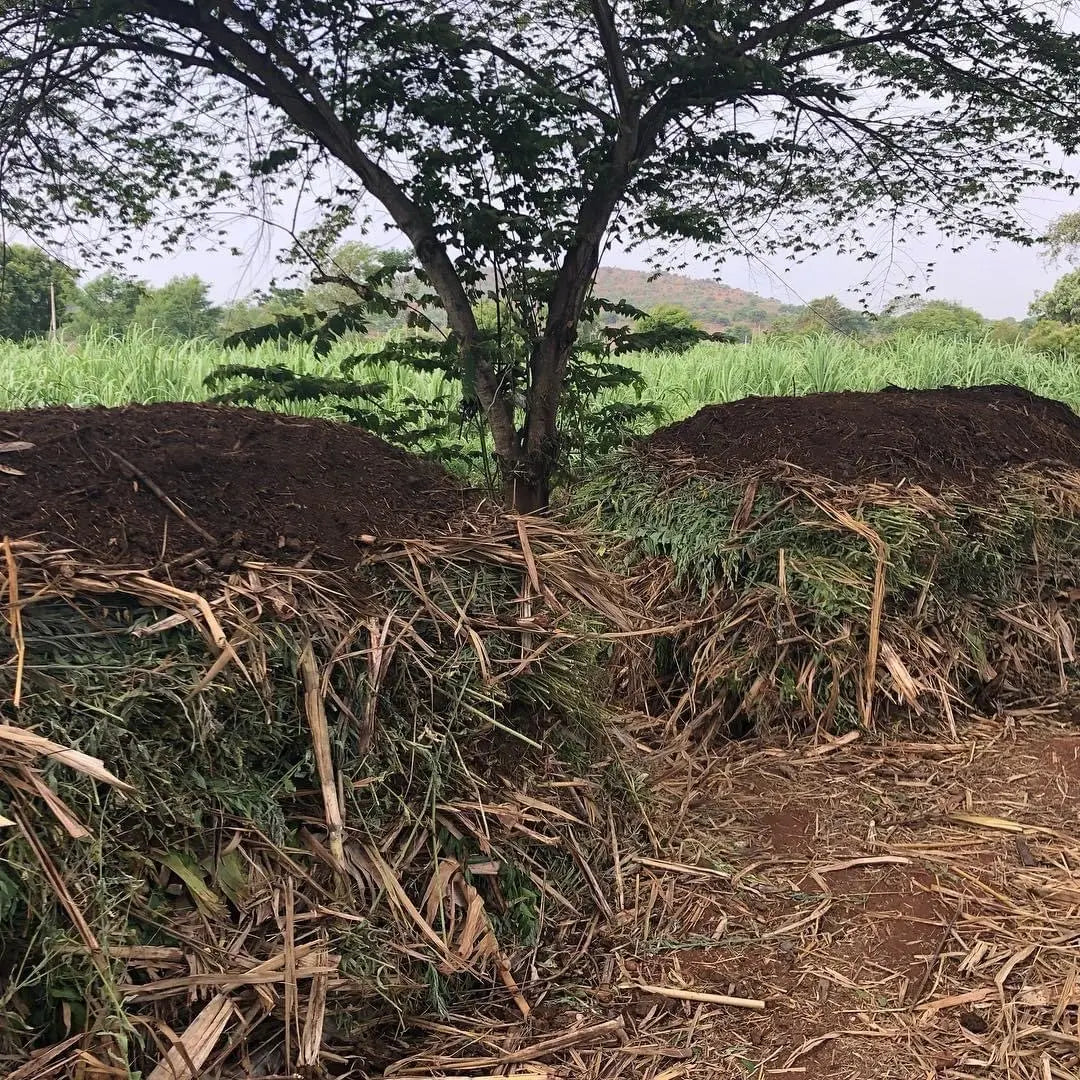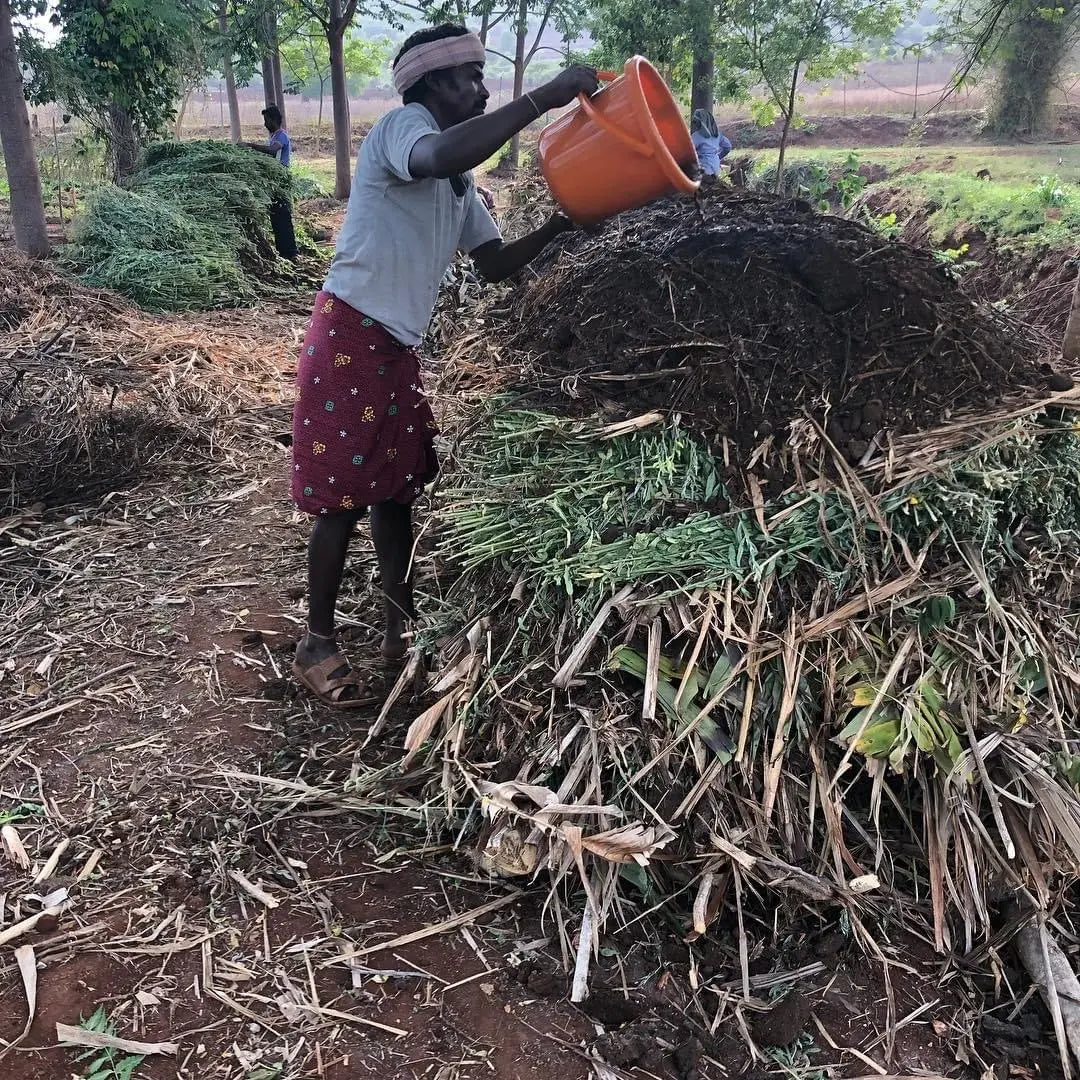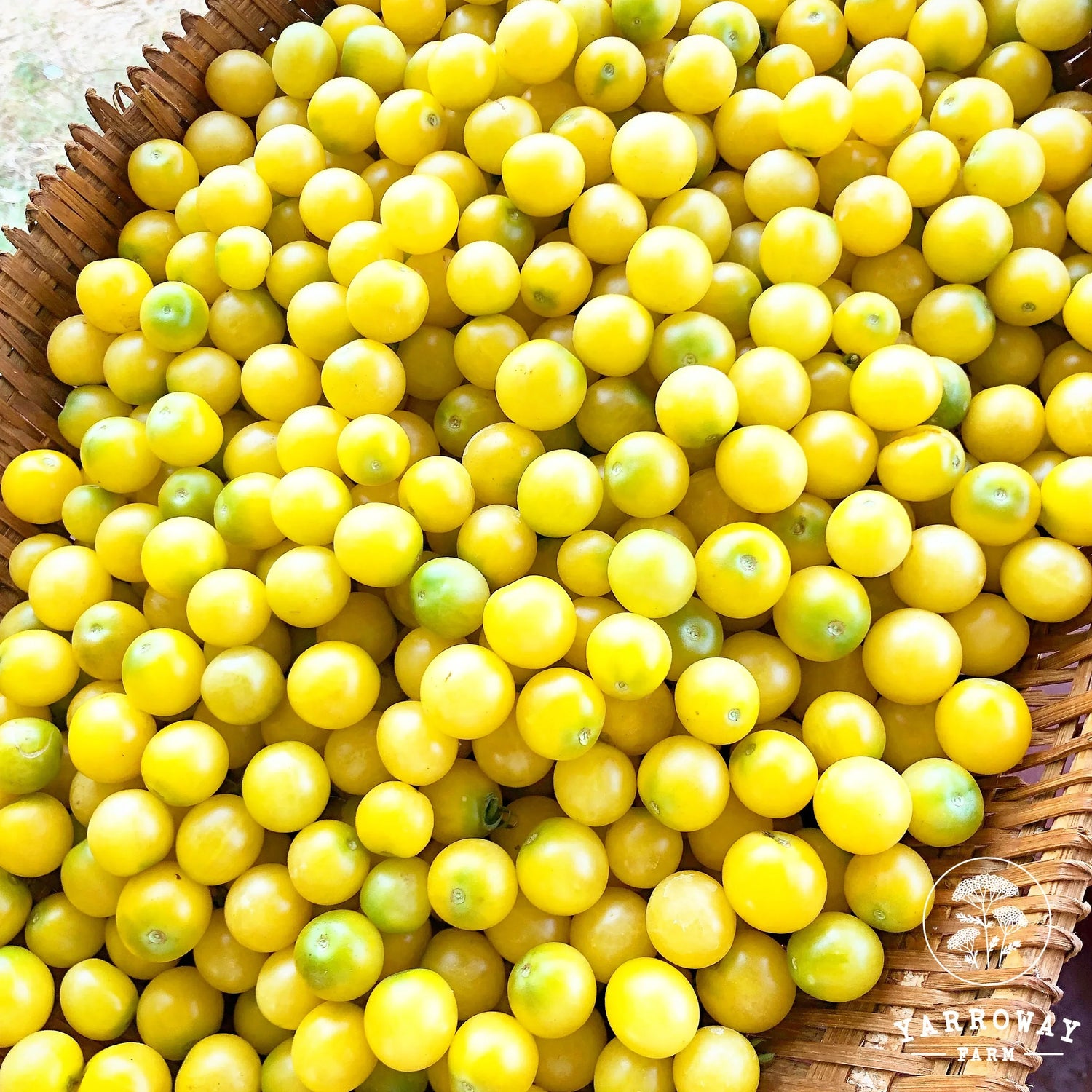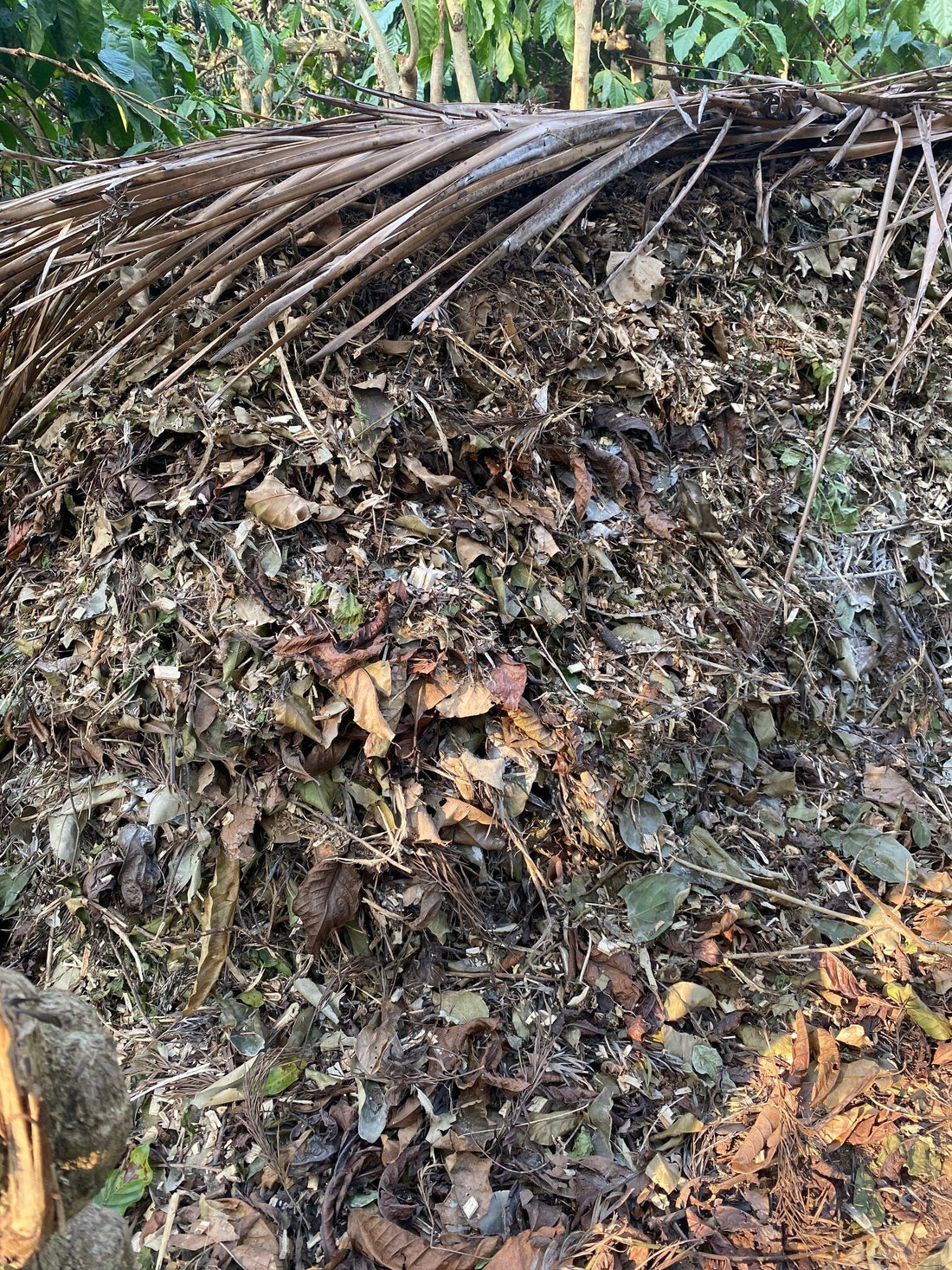

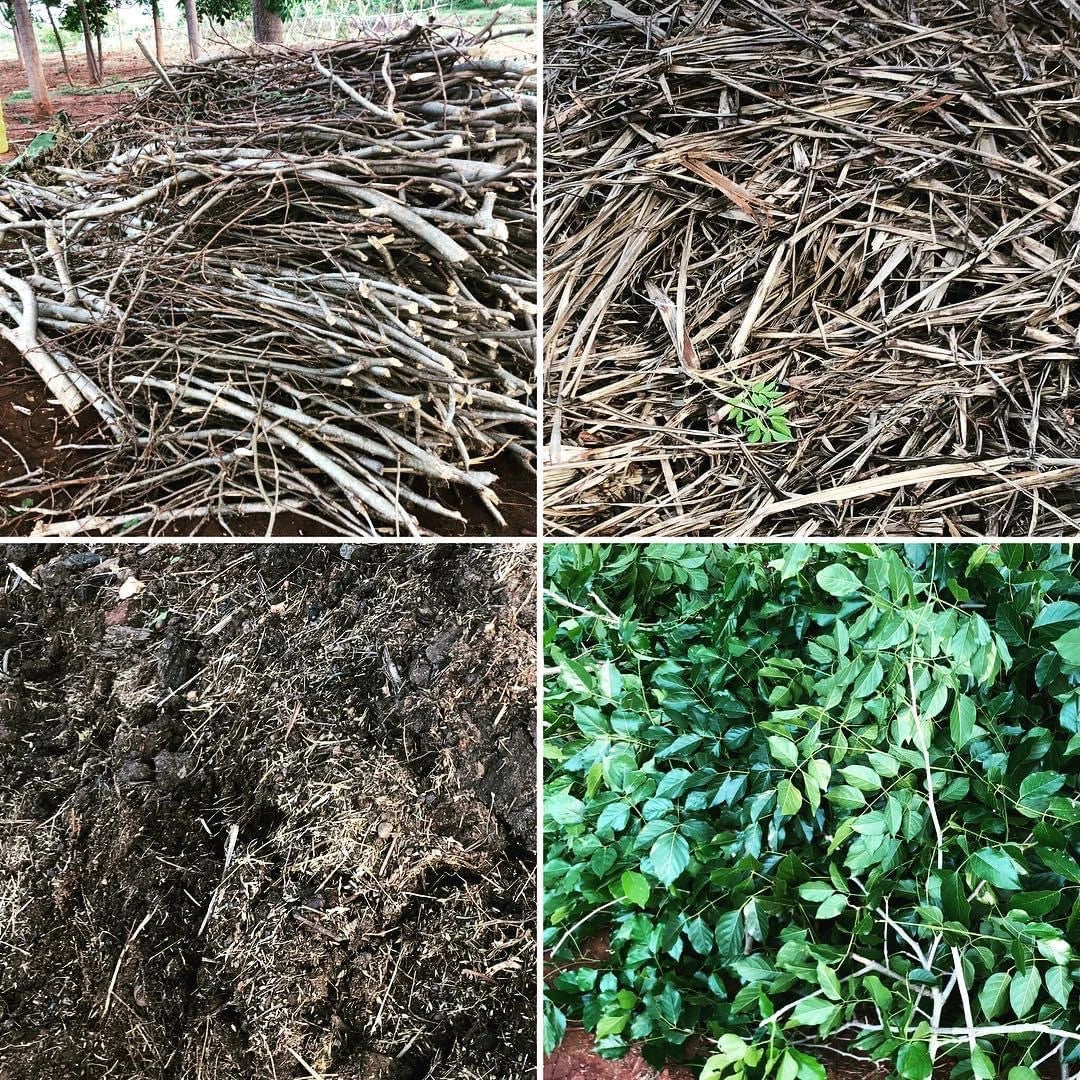
Part 1 - Collect all the material needed
1. Air Layer – branches, twigs – 5%
2. Carbon Layer – dried leaves, plants, grasses (brown matter) – 35%
3. Animal Manure – cow/chicken/goat/horse manure from animals on the farm. Fresh or semi decomposed – 30%
4. Green Nitrogen Layer – fresh grasses, plant matter, medicinal leaves that have elements of pest and fungus control, banana stems and leaves, uncooked kitchen waste, etc. – 30%
5. Phosphorus- Wood Ash / Rock Dust / Borewell Dust – 1kg
6. Lime Powder – Stone/Shell – 1kg
Note: Dry matter can be collected over a period of time on the farm, but fresh matter such as greens should be collected right before making the compost.
Part 2 - Making the layers
Find a nice shady spot where water can be supplied to the compost pile if required. – Determine the length and width of your compost pile. No strict rules but you can bring it to a height of 5-6 ft, width of 4-5ft, and 10-15ft in length.
STEPS:
1. Start with the Air Layer with the branches and twigs so you can avoid water and rain water sitting at the bottom of the compost pile or washing away the elements
2. Add the carbon layer
3. Sprinkle wood ash/ rock rust / borewell dust on the carbon layer – to bring the phosphorus elements in.
4. Add the manure layer. Add water to this layer if you live in a dry belt or it’s summer. If your manure is moist enough and it’s the monsoons you can skip the watering.
5. Add the green layers – bring in a nice mix of nitrogen fixing greens, medicinal, food, and resilient plants like jatropa, casuarina, pongemia, lantana, etc.
6. Sprinkle lime above the greens so sufficient amount of heat is generated during the compost making.
7. Repeat steps 2-6 at least 3 times or more until you reach a height you can access and work with.
8. Plaster wet compost on the last layer and cover it well with dry banana or coconut fronds so you protect it from excess dryness or rain.
(Refer to images for quantity needed, application style, etc)
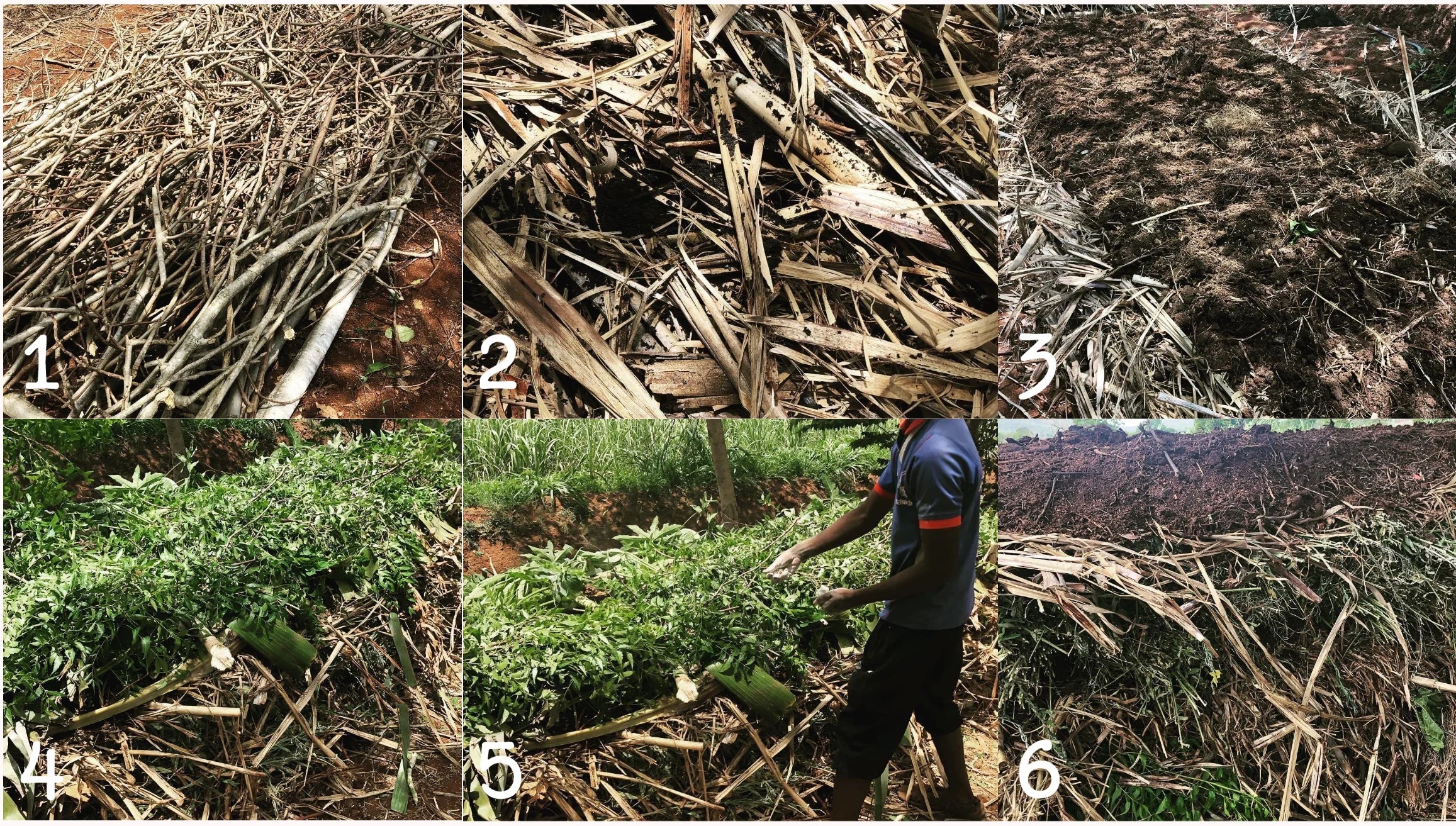
Part 3 - Final Notes
There are no set rules to making compost. Biodynamic composts are typically made the aerobic way, which uses oxygen and bacteria and replicates natural decomposition. At the end of making the compost pile we typically add CPP water and biodynamic preps to bring in all the energy elements to the compost piles. – You can do your own version by adding panchagavya, jeevamrut, local soil, seaweed, bloodmeal, casuarina tea to control fungal issues on your farm, etc. Basically whatever elements you want to add to your farm. – This pile needs to be turned at least twice after 1-2 months depending on the speed of breakdown. The compost typically is ready for use after 3 months. It colder areas it can take up to 6 months. So just keep checking it every 15 days and make sure it doesn’t dry out. When ready, it should be completely soft and smell like fresh earth or petrichor.
